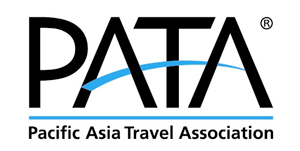As the global airline industry eyes a record-breaking year in 2025, with revenues projected to hit US$1 trillion (RM4.75 trillion) and net profits reaching US$36.6 billion (RM174 billion), the road ahead remains anything but smooth. Despite surging demand for air travel and expanding routes, airline operators worldwide are preparing for another challenging year marred by persistent aircraft delivery delays, soaring operational costs, and complex supply chain issues.
According to the International Air Transport Association (IATA) and the Association of Asia Pacific Airlines (AAPA), while headline figures paint a positive picture, the underlying reality suggests turbulence ahead. Both bodies warn that the industry’s recovery may stall under the weight of logistical constraints and inflationary pressures.
Aircraft Shortages Threaten Fleet Expansion Plans
Mabel Kwan, Managing Director of Alton Aviation Consultancy Singapore, highlighted that a major stumbling block for the industry is the extended backlog in aircraft deliveries. “Wide-body jets are now facing delivery delays of seven to eight years, and narrow-body aircraft are approaching a ten-year wait,” she told Business Times.
These delays are forcing airlines to keep older aircraft in service longer than intended, pushing up maintenance costs and overwhelming maintenance, repair, and overhaul (MRO) facilities already constrained by labour shortages. The domino effect is clear — limited MRO capacity, high lease renewal rates, and limited access to newer aircraft are squeezing airline profitability despite sustained passenger demand.
“Airlines are having to renew leases at higher costs or extend contracts simply because new aircraft aren’t arriving on time,” said Kwan. “Add to that rising fuel costs and manpower shortages, and the operational margins begin to thin rapidly.”
Yield Softening and Economic Headwinds
While the rebound in air travel has been strong, especially in the Asia-Pacific region, experts caution that yields are softening as more capacity returns to market. Kwan pointed to the Singapore-China route as an example, where fares that once reached S$8,000 during limited service periods have now dropped significantly as carriers resume regular flights.
Compounding the problem are broader macroeconomic concerns, including inflation, geopolitical tensions, and slowing economic growth in China — a key source market for global tourism. These uncertainties are contributing to a more cautious long-term outlook for demand growth.
Strategic Openings for Agile Players
Despite the challenges, opportunities remain — particularly for smaller, more nimble aircraft manufacturers. Brazil’s Embraer, for instance, is gaining ground in Southeast Asia by offering aircraft suitable for thinner, underserved regional routes.
“Scoot’s recent launches to Malacca and Koh Samui using Embraer aircraft is a classic case of right-sizing,” said Kwan. “It allows carriers to open new routes without the overheads of larger aircraft.”
She also highlighted regional carriers’ readiness to tap niche markets, especially after undergoing post-pandemic restructuring. However, success hinges on securing the right aircraft types for these smaller markets.
China’s COMAC is also eyeing expansion into Southeast Asia, though regulatory and support infrastructure gaps remain key hurdles. Without certification from Western aviation bodies such as the FAA and EASA, COMAC’s international push may remain limited.
Collaboration is Key
Kwan emphasized that the industry’s current predicament is the result of interconnected challenges across its ecosystem — from manufacturers and MROs to airports, ground handlers, and leasing companies.
“These are systemic issues. No single stakeholder can solve them in isolation. Encouragingly, we’re seeing more collaboration across the board, from airports to airlines and parts suppliers, to address the bottlenecks,” she said.
As 2025 approaches, the airline sector must balance bullish demand projections with grounded expectations. While passengers may be flying high again, airline operators will need to stay agile and collaborative to navigate the headwinds that continue to test the industry’s resilience.
???? Read more aviation and tourism insights at www.tin.media
- TAGS / KEYWORDS:
- Hot News




.webp)












 (Facebook Video).png)

.png)














